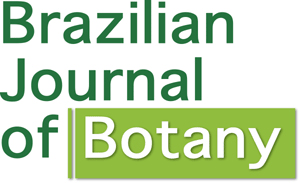We evaluated the floristic relationships among 20 swamp forests of Southeastern and Central-Western Brazil using multivariate analyses. Detrended correspondence analysis (DCA) and TWINSPAN (Two way indicator species analysis) indicated two distinct floristic groups among forests, according to the Phytogeographic Province (Paranaense or Cerrado) and their climate conditions, phytophysiognomies, and species composition. Within the same province, edaphic conditions and geographical distance, among other factors, may be responsible for similarities or dissimilarities among the forests floras. Our results indicated that, despite the low a diversity, γ diversity is high among the forests, as a result of the low floristic similarities among the remnants and the high number of unique species (55% of all species). Although floristically distinct, we concluded that the inland swamp forests of Southeastern Brazil and the gallery swamp forests of Central Brazil are part of the same forest formation. These forests have in common, in addition to the swampy environment, low plant species diversity and species that have high local densities, such as Calophyllum brasiliense Cambess., Cecropia pachystachya Trécul, Dendropanax cuneatus Decne. & Planch., Guarea macrophylla Vahl, Magnolia ovata (A. St.-Hil.) Spreng., Protium spruceanum (Benth.) Engl. and Tapirira guianensis Aubl.
Cerrado province (Brazilian savannas); floristic similarity; gallery swamp forests; Paranaense province; γ diversity





